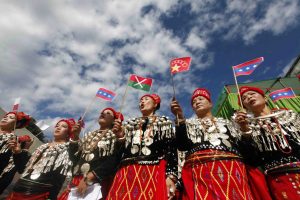After multiple rounds of postponement, Myanmar finally held the Fourth Union Peace Conference (UPC) from August 19 to 21. More than two years had passed since the Third UPC, despite the National League for Democracy (NLD) government’s original plan to convene the UPC every six months. Despite the low expectations for concrete progress and deliverables from the Fourth UPC, the conference arguably provided much-needed direction for the future of the peace process beyond the general elections this November.
The Fourth UPC was also notable for the absence of several ethinc groups that had previously been nudged to attend by China. Beijing has been an indispensable and significant player in Myanmar’s peace process. However, during this election year, the civil-military dynamics in Myanmar, developments in Rakhine state, and great power competition are all complicating China’s role in the peace process at this juncture.
China and the Fourth Union Peace Conference
Despite rounds of delays, the Fourth UPC was attended by representatives of the NLD government, the military, ethnic parliaments, political parties, and 10 signatory groups of the Nationwide Ceasefire Accord. In terms of substantive deliverables, the conference passed the Third Part of the Union Accord, affirmed the principle agreement on a true “democratic federal union,” and passed a peace work plan for after 2020.
Because few had high expectations of the Fourth UPC, the lack of both a substantive agreement and the inclusive participation of all ethnic armed groups (EAOs) was well-anticipated. The Burmese government and pro-government media have tried to cast a positive light over the achievements of the UPC, selectively emphasizing the deliverables that were passed. It is arguably true that the key utility of the Fourth UPC lies in setting the future direction of the peace process after the 2020 elections. Although the development will inevitably be subject to change beyond the control of the Burmese government, an effort to roughly sketch the direction is still important.
The biggest weakness of the Fourth UPC is the absence of the six EAOs from northern Myanmar who had received the invitation from the Burmese government. The six groups, along with the Arakan Army (AA), had formed their political alliance, the Federal Political Negotiation and Consultative Committee (FPNCC), in 2017. Although the EAOs attributed their absence to the logistical difficulty posed by the COVID-19 pandemic, the failure of the Burmese authorities to meet the “inclusiveness” criteria for the peace conference is the essential reason for their refusal to participate. Both the civilian government and the military designated AA a terrorist organization and excluded it from the peace process; FPNCC perceives this as deliberate set-up by the NLD government, part of a conspiracy to “divide and conquer.”
One of the most important roles that China played in the Union Peace Conferences of the past was ensuring the participation of the EAOs from northern Myanmar, especially the United Wa State Army and the Kachin Independence Army. However, this time around, it does not appear that China exerted pressure for them to attend the UPC. One reason could be that the Myanmar government did not make that specific request. If Myanmar did not even ask, China certainly would not feel the need to offer. While COVID-19 and the low expectations for the UPC did make it easier for Beijing not to force the hands of the EAOs, China has been supportive of the “all inclusive” principle of the peace process. In this sense, tacit disapproval of the exclusion of the AA is evident in the Chinese narratives.

































